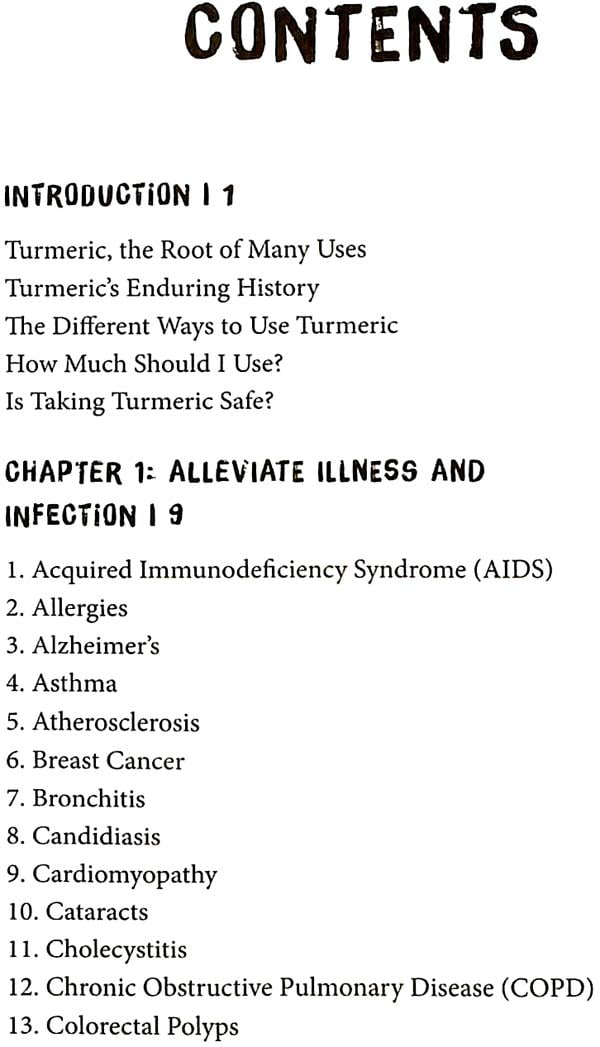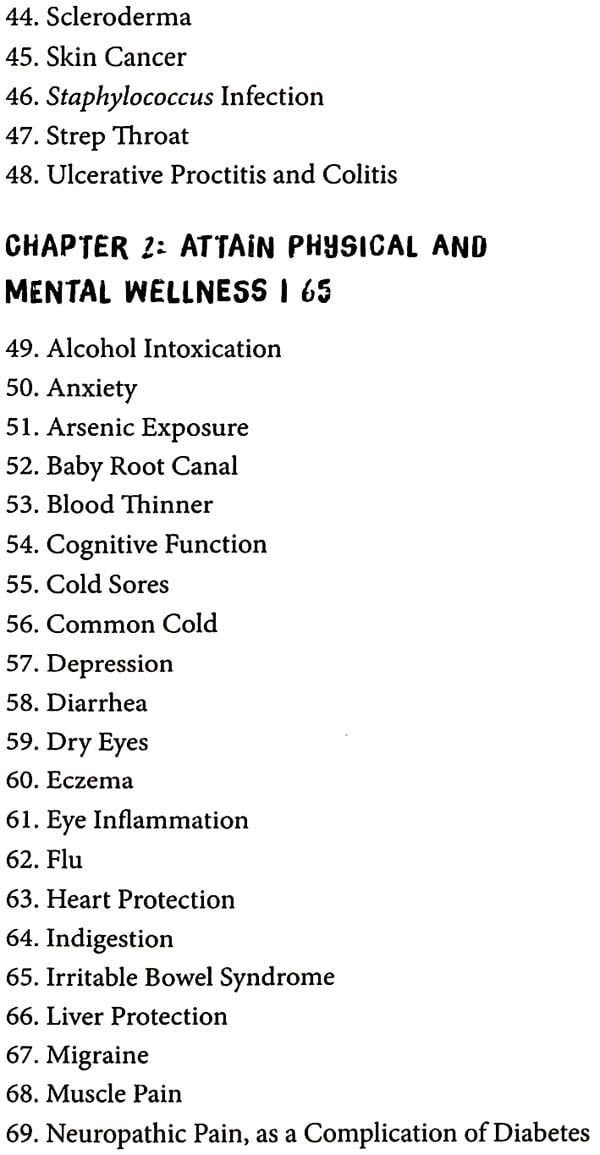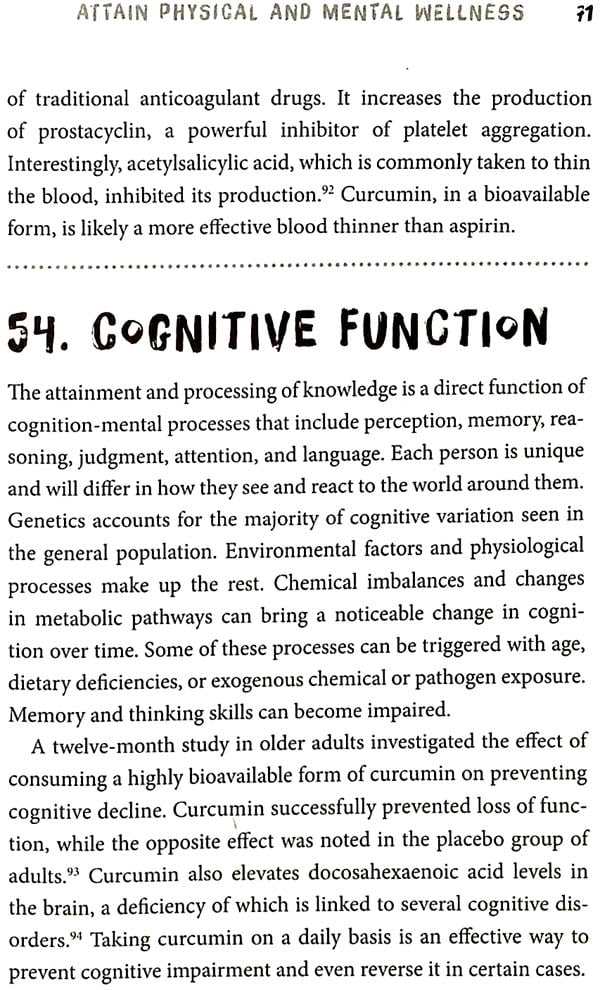
Turmeric (101 Amazing Uses)
Book Specification
| Item Code: | NAP473 |
| Author: | Susan Branson |
| Publisher: | Familius Publishing |
| Language: | English |
| Edition: | 2018 |
| ISBN: | 9781641700979 |
| Pages: | 145 |
| Cover: | PAPERBACK |
| Other Details | 8.50 X 6.00 inch |
| Weight | 100 gm |
Book Description
SUSAN BRANSGN earned an undergraduate degree in biology from St. Francis Xavier University, then an MSc in toxicology from the University of Ottawa. From there, she worked in research: in the field, in the lab, as a writer, and as an administrator. She took time off and stayed at home after her second child was born. In addition to being a stay-at-home mom, she also took violin lessons, took photography courses, earned a diploma in writing, and ultimately became a holistic nutritional consultant. Susan is a member of CSNN's Alumni Association, Canada's leading holistic nutrition school.
Most people buy turmeric as a deep yellow powder in the spice aisle. It may be surprising to see turmeric whole, in its rhizome form.
The rhizome is actually the horizontal, underground stem of the plant. From this, the upright stem containing the leaves and flowers rises about a meter above the surface. Below the ground, roots branch off the rhizome to reach down into the earth. Often, the rhizome is referred to as a root, so when you see the term turmeric root, it actually refers to the rhizome.
Turmeric looks very similar to ginger and, in fact, is part of the ginger family. The main rhizome tends to grow up to three inches long and an inch in diameter, with smaller rhizomes branching off in all directions. The rhizomes are tuberous, segmented, and rough in appearance. The outside of the turmeric rhizome is a yellowish-brown color, and the inside is orange, similar to that of a carrot.
The rhizomes are harvested, boiled for roughly forty minutes, dried in ovens, and then ground into the familiar yellowish-orange powder. Most often used as a spice in Indian and Southeast Asian dishes and as one of the main spices in curry, turmeric has a sweet yet slightly bitter flavor that pairs well with coconut, chilies, beef, poultry, seafood, and other spices like pepper, cumin, ginger, and nutmeg, among others. Turmeric is used equally for its flavor and its color. Depending on the amount used, it will turn a dish any shade between soft butter-yellow to strong marigold. Its suitability as a dye has encouraged the food, textile, and beauty industries to use turmeric to color food, cloth, and cosmetic products.
The yellow color of turmeric comes from one of its main constituents, a polyphenol called curcumin, comprising about 6 percent of the rhizome. Over the last few decades, the medical community began taking notice of turmeric, and now thousands of studies have identified turmeric and curcumin as having antioxidant, anti-inflammatory, antimicrobial, anticancer, and hypoglycemic properties. These have the potential for far-reaching applications, and we have been hearing more and more about the beneficial healing effects of turmeric on conditions that are both chronic and acute, common and rare, minor and serious.
















